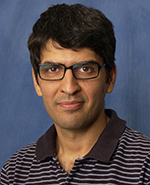
Dr Ehsan Arabzadeh
Eccles Institute of Neuroscience
John Curtin School of Medical Research, Australian National University
Dr Arabzadeh studies sensory processing in the rat whisker system at the level of single cells and cortical circuits using electrophysiological and optical imaging techniques. This expert system is ideally suited to quantifying brain activity underlying behaviour - a principal goal of systems neuroscience. Dr Arabzadeh records neuronal activity in anaesthetised and awake behaving rodents and applies computational methods to characterise neuronal encoding of sensory stimuli, the role of adaptation in coding efficiency, decoding by neuronal populations, and the link between neuronal activity and behaviour.
Dr Arabzadeh has published 30 papers in high-ranking journals and has more than 800 citations, and in 2011 received the A.W. Campbell Award from the Australian Neuroscience Society. The annual award recognises the researcher who has achieved the highest standard of work in neuroscience during his or her first five postdoctoral years. In 2008, Dr Arabzadeh established an independent research group at the University of NSW. In 2013, he moved his research group, the Neural Coding Lab, to the Eccles Institute of Neuroscience, at the ANU. His research group uses state of the art techniques and has a broad interest in systems neuroscience. He will contribute to the discussion of the future of neuroscience research in Australia.
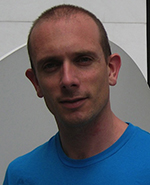
Dr Andrew Barron
Department of Biological Sciences
Macquarie University
Dr Barron is a comparative neurobiologist studying the evolution of behavioural systems. He showed that both insects and mammals organise their behaviour around central reward-seeking systems that are operationally and chemically so similar that both groups respond in the same way to drugs of abuse like cocaine. He showed that honey bees are capable of metacognitive decision-making, and developed a circuit model for how metacognitive processing can operate within the tiny honey bee brain. He is a participant in the US National Evolutionary Synthesis Center working group ‘Towards a unified theory for the evolution of animal decision making’. Dr Barron believes we need to look beyond what studying the human brain can tell us about the human brain. If placed in a comparative context the EU Human Brain Project is an unparalleled opportunity to examine how a complex organic cognitive processor has evolved. The human brain is described by the human brain project as ‘the most complex machine known’ but most animals survive and thrive with only a tiny fraction of the human brain’s processing power. By examining new findings from human neuroscience alongside comparative insect research we can ask why did the human brain evolve to be so massive, and explore what elements of the structure of the human brain relate to the advanced behavioural capacities that are uniquely human.
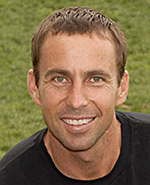
Dr Guy Barry
Institute for Molecular Bioscience
The University of Queensland
Dr Barry is currently working in the lab of Professor John Mattick exploring non-coding RNA and elucidating the underlying mechanisms of human cognition and the implications for psychiatric disease in human neurons derived from induced pluripotent stem cells. Previously, he investigated brain development, especially the hippocampus, using mouse transgenic models. He has also had extensive experience in biotechnology while working at Neurocrine Biosciences Inc. located in San Diego, California.
Dr Barry’s extensive molecular neuroscience experience coupled with interests in unravelling the mechanisms underlying human brain function and psychiatric disease are well suited for this Think Tank. Dr Barry will also be well placed in his senior role working with Professor Mattick to be involved in an Australia-wide effort in all areas of research under discussion during this event.
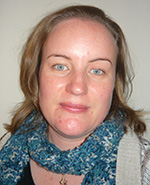
Dr Kristyn Bates
School of Animal Biology
University of Western Australia
Dr Bates’ research involves investigating mechanisms of brain repair and recovery from injury and disease. Her postdoctoral training was conducted at Edith Cowan University where she researched causes and risk factors for Alzheimer's disease. In 2008, she was invited by Professor Thomas Wisniewski to work in his laboratory at the New York University School of Medicine undertaking research into therapeutic compounds for neurodegenerative disease. Since 2010 she has been developing a research program centred on the cellular responses to neurotrauma. She is currently funded through the Neurotrauma Research Program of Western Australia. Dr Bates’s research is directly related to two of the key areas for the Think Tank: B and D. She has presented her work at numerous national and international meetings and delivered a keynote address at the WA Active Ageing Conference in June this year. She has interacted with community groups and members of the general public through her work with the McCusker Alzheimer’s Research Foundation and the science communication/outreach programs she is involved in. She believes that the best outcomes are arrived at by working together and involving as many opinions and experiences as possible. Neuroscience is a field that involves so many disciplines and is vital to meeting the challenges of an ageing population - yet it receives so little attention and funding. Dr Bates is pleased to be given this opportunity to represent her state and provide a strong and united voice for neuroscience research in Australia.
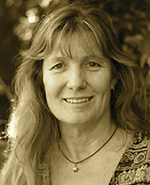
Dr Dana Bradford
Science into Society group
CSIRO
Dr Bradford works at the interface of neuroscience and technology to improve outcomes for specific population groups. She is particularly passionate about facilitating functional recovery following insult or illness and is also interested in predicting and preventing cognitive decline in elders. She spent seven years at the Queensland Brain Institute (research assistant, Honours, PhD, Post Doc) researching adult neurogenesis and the molecular mechanisms underpinning migration in the adult brain. At the CSIRO she works with a variety of domain experts to develop new technologies for the prediction of decline and facilitation of functional recovery in humans.
Two of Dr Bradford’s current projects are of direct interest to the Think Tank. In the first, homes of independent elders are outfitted with a sensor-based monitoring system. Dana’s role is to determine if the sensor-derived data can predict cognitive decline. This objective assessment would allow the tailoring of homes for specific neurodegenerative diseases and facilitate discussion on future care arrangements before the residents’ faculties are diminished. Secondly, she is developing TRACTs (Telehealth, Rehabilitation and Communication Technologies), a platform combining a novel technique for brain rehabilitation with telehealth and communication portals. The rehabilitation component is based on activation of specific regions of the cortex using serious games, and will be tested using the latest fMRI techniques. Finally, she works with domain experts in imaging, robotics, computer interaction and information technology. This combined with her neurobiology and psychology experience will allow her to contribute unique interdisciplinary insights.
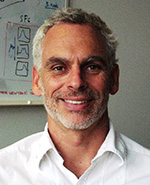
Professor Michael Breakspear
Program of Mental Health and Complex Disorders Research
Queensland Institute of Medical Research
Professor Breakspear is the coordinator of the Program of Mental Health Research at the QIMR, Professor of Psychiatry at the University of Queensland, Professor of Physics at the University of Sydney and a Psychiatrist at the Royal Brisbane Hospital. He is the Section Editor at the prestigious journal NeuroImage and an expert in computational models of the brain in health and disease. He leads a multidisciplinary research team that undertakes psychiatric and imaging research aimed at improving diagnosis and treatment in clinical psychiatry. He will hence bring a range of expertise and experience in research in neuroscience, computational biology and psychiatry.
He is interested in the basic principles of large-scale brain dynamics and how they underpin cognitive operations, such as perception, inference and motor control. As a psychiatrist, he also hopes to contribute to our understanding of major mental illnesses such as mood disorders, schizophrenia, autism and dementia. These contribute strongly to the burden of illness in all societies and cause significant distress to those affected. He believes advancing our understanding of these disorders requires that we employ - and further advance - cutting edge neuroscience techniques.
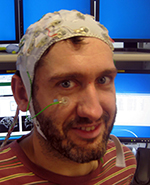
Dr Jon Brock
ARC Australian Research Fellow / Senior Lecturer
Cognitive Science
Macquarie University
Dr Brock’s research uses a range of methods, including magnetoencephalography, electroencephalography, and eye-tracking to investigate the cognitive and neural mechanisms involved in neurodevelopmental disorders. Currently, his work focuses on autism spectrum disorders, but he has published theoretical and empirical work on Down syndrome, Williams syndrome, specific language impairment, dyslexia, schizophrenia, and intellectual disability, as well as basic research on cognitive and linguistic processes in typical development.
One of the major challenges facing applied neuroscience research is the need to move beyond the largely arbitrary diagnostic categories that currently exist in psychiatric manuals. Dr Brock’s own research on autism increasingly focuses on individual rather than group differences, but these issues are highly relevant to a wide range of disorders and approaches. To meet these challenges, future research will need to be increasingly collaborative. Here, he also has considerable experience, having played a leading role in establishing a network of Australian autism researchers, culminating in the formation of the Australasian Society for Autism Research. Finally, given the social and ethical implications of neuroscience research, engagement with end-users will become increasingly important. He has been highly active in this regard, and will share his experience of organising public research forums and using social media and blogging to share and discuss the implications of clinical neuroscience research.
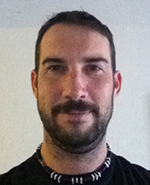
Dr Thomas Carlson
ARC Centre of Excellence in Cognition and its Disorders
Macquarie University
Dr Carlson’s research studies the neural mechanisms that support our ability to recognise objects (e.g., identifying a spoon); and how the brain integrates objects into the body representation for efficient action (e.g., using the spoon to eat). His lab employs a range of techniques, including behavioural and cognitive neuroscience methods (fMRI and MEG). Dr Carlson's work has also been instrumental in the development of ‘brain decoding’ methods, which are now being used by the neuroscience community to address both basic research questions and for the development of brain machine interfaces.
This past year Dr Carlson was recruited to move from the United States to Macquarie University through the ARC Future Fellowships program. Having worked in the US for his entire career, he can bring a unique perspective to this year’s discussion. He has had the opportunity to observe a number of US initiatives and their impact. In the 1990s, the US began a large interagency initiative to understand the human brain in the context of health and disease, declaring it the “decade of the brain”. This was followed with the “decade of behaviour”, an initiative to integrate behavioural research. The US has now begun to move forward with the BRAIN (Brain Research through Advancing Innovative Neurotechnologies) initiative. At this year’s Think Tank Dr Carlson will share his views on these initiatives – successes and failures – and discuss the direction for Australian neuroscience research.
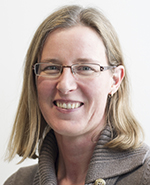
Dr Vibeke Catts
Schizophrenia Research Laboratory
Neuroscience Research Australia
For her PhD, Dr Catts studied cell death and proliferation in mental disorders utilising rodent models and cell cultures. Currently she researches schizophrenia using human post-mortem brain tissue. Her laboratory views schizophrenia as a disorder of adolescent brain development and has extensively mapped mRNA expression trajectories of candidate molecules in a developmental human brain tissue collection. They complement post-mortem work with rodent and primate models to elucidate molecular mechanisms. Dr Catts is also leading a study of the anti-cancer potential of antipsychotic drugs in a rat model of glioblastoma, utilising bioluminescence to monitor tumour progression.
Dr Catts’ work spans two broad areas, mental illness and brain cancer. She is experienced in animal model and human post-mortem brain research. She is a capable thinker at the mechanistic level, and maintains awareness of the importance of clinical relevance of research findings, and has been commended for her ability to break “big ideas” into achievable components. Dr Catts thinks breakthroughs in schizophrenia will most likely arise from synthesising knowledge from other fields, such as cancer and immunology, believes in team science and is interested in models of research management. She keeps abreast of local and international research policy, especially the fairest ways to distribute research funds, i.e. relative to disease burden, and fosters community engagement in research, both by public speaking and through the Queensland Schizophrenia Research Foundation, of which she is Treasurer. She believes that she can both contribute to, and gain from, the Think Tank.
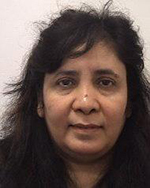
Dr Girija Chetty
Faculty of Education, Science, Technology and Mathematics
University of Canberra
Dr Chetty’s research interests and experience are in the area of neuroimaging, and she is currently pursuing research on multimodal fusion of structural and functional MRI brain images for early detection of mental health disorders, including Alzheimer’s disease. She has been working on this project in close collaboration with Professor Nic Cherbuin, Director of Neuroimaging and Brain Lab at ANU College of Medicine, Biology and Environment, and currently investigating novel mathematical and artificial intelligence models for automatic corpus callosum shape recognition from structure brain MRI images for detection and monitoring of mental health disorders.
The agenda for the proposed Think Tank on smarter brain research aligns very much with Dr Chetty’s research interests and experience on neuroimaging and the projects she is pursuing in this area. In addition to working with experts at ANU in neuroimaging, she is also pursuing several industry and international collaborations in research on multimodal brain imaging, mainly with Professor Simon Warfield from Harvard University, and Dr Olivier Salvado from CSIRO Brisbane, at the Australian e-Health Research Centre, who have developed one of the largest multimodal neuroimaging databases, used worldwide by researchers in neuroimaging for benchmarking their research findings. This background and expertise will allow her to contribute significantly to this year’s Think Tank on smarter brain research in Australia.
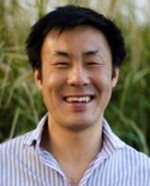
Professor Roger Chung
Australian School of Advanced Medicine
Macquarie University
Over the past five years, Dr Chung has established a research program with two major themes – traumatic brain injury and understanding how glia can be manipulated to enhance neural regeneration; and Alzheimer’s disease and understanding the biochemical characteristics of beta-amyloid aggregation and the role of glia in the endogenous clearance mechanism of neurotoxic amyloid. He has overseen this multidisciplinary research program that has integrated collaboration with senior researchers across biochemistry and molecular biology, cell biology, advanced microscopy, and animal models of disease. His experience in organising and leading this multidisciplinary research program is relevant to this Think Tank.
Dr Chung has overseen the recruitment of five teams to establish a new Motor Neurone Disease (MND) research group at Macquarie University. This multidisciplinary group integrates genetics, biochemistry, cell biology and animal models of disease with direct access to MND clinics, forming a critical mass of expertise in MND research. This model represents an important example for the Think Tank of a possible multidisciplinary approach towards smarter brain research in Australia. He is currently president of Brain Injury Australia, the peak body representing Australians living with acquired brain injury. A major feature of its activities has been working with government on the legislation and working documents of the National Disability Insurance Scheme. It is important that basic research is engaged with and is connected to the sufferers who need help, and this is a point Dr Chung wishes to represent at the Think Tank.
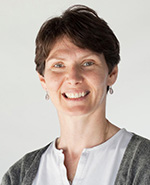
Associate Professor Elizabeth Coulson
Queensland Brain Institute
The University of Queensland
Associate Professor Coulson is a group leader at the Queensland Brain Institute (QBI), University of Queensland (since 2003). She has an international reputation for her work on the function of the p75 growth factor receptor in nervous system development and neurodegeneration, using molecular and cell biology methods as well as animal models to delineate molecular mechanisms of neuronal survival and brain structure-behaviour relationships. She discovered a candidate therapeutic molecule that is currently undergoing testing for efficacy in animal models of neurodegeneration. She is developing methods in mice and humans to detect and measure degeneration that occurs early in Alzheimer’s disease, with the aim of translating her basic discoveries.
Associate Professor Coulson is a neuroscientist tackling the major heath issue of neurodegenerative disease. She has a breadth of research experience: working at the bench concurrently with managing intellectual property, performing research in linkage with pharmaceutical companies and/or with commercial outcomes as an aim, and publishing. She is currently in the process of translating her basic discoveries to a clinical setting by recruiting and selecting patients for trials. She was a founding member of the fledgling Queensland Brain Institute and participated in its development and growth, has sat on grant review panels for six years, helped develop research higher degree policy at department, university and Group of Eight levels, and regularly engages with the public through seminars. She is passionate about enhancing the way (neuro) science is performed and managed in Australia and believes all suggestions should be considered for their merits even if they are ultimately discarded. She has ideas to share.
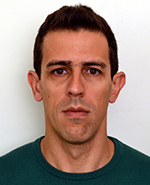
Dr Alexandre Cristino
Queensland Brain Institute
The University of Queensland
Dr Cristino’s research is focused on developing methods for novel analysis of genetic data associated with mental health disorders. Over the past seven years he has used interdisciplinary approaches bridging the fields of computational biology, systems biology and molecular genetics. His work has contributed to a number of seminal publications including ‘Neurodevelopmental and neuropsychiatric disorders represent an interconnected molecular system’. His recent work involving the genetic screening of Australian autism families helped support the CRC ‘Living with Autism Spectrum Disorders’.
Dr Cristino’s contribution to the Think Tank will be in artificial intelligence, maths and modelling. In the post-genomics era, data is being generated faster than can be adequately and effectively analysed. The uses of modern genetic screening technologies detecting an increasing number of DNA variants and candidate genes that lack a hypothesis concerning their relationship represents a significant obstacle to understanding the genetic basis of mental health disorders. Dr Cristino uses conceptual and investigative approaches that couple complex network concepts with novel computational techniques not normally used in neurogenetics to see if there is a way forward in analysing the swelling genetic data. His research is contributing to the development of genetic tools that can be used in the diagnosis of autism and associated disorders.
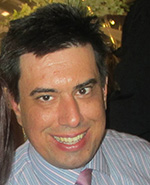
Dr Mathew Dafilis
Melbourne School of Population and Global Health
The University of Melbourne
During the course of his PhD program and his postdoctoral studies Dr Dafilis has developed extensive experience in the mathematical modelling of neural systems. His particular research focus has been on the nonlinear properties and chaos theory of brainwaves (the electroencephalogram – EEG) and he has published a number of studies in this area. In addition to this research experience he also has experience in teaching mathematical modelling of biological systems and it is the skills he has developed in being able to communicate these concepts that he will be able to bring to his participation in this Think Tank.
Dr Dafilis’s knowledge and background in neuroscience means he will be able to make a broad contribution to the Think Tank at large and also importantly gain insight from the proposed presentations. In particular, his knowledge, skills and interest in ideas at the interface of mathematics, modelling and neuroscience mean that he will be able to make a contribution to Breakout Group C (artificial intelligence, maths and modelling). His specific experience in nonlinear dynamics and chaos theory as applied to neuroscience means that he will be able to provide a unique perspective to Group C, as much science at the interface of neuroscience and mathematical modelling involves these concepts.
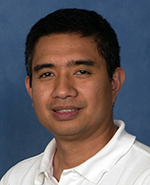
Dr Vincent Daria
Eccles Institute of Neuroscience
Australian National University
Dr Daria’s research interests are in the application of lasers for multi-photon fluorescence microscopy, multi-beam optical tweezers and holographic projection. His research at the Eccles Institute of Neuroscience has focused on using holographic projection for multi-site two-photon excitation for stimulating neurons. In the past, photostimulation of caged neurotransmitters used beam scanners. In contrast, Dr Daria projects multiple time-gated spots for multi-site non-linear two-photon excitation to uncage neurotransmitters arbitrarily in 4D. He has extensive experience in cross-disciplinary work between physics and the life sciences. Recently, his lab reported the use of squeezed light to image cells beyond the quantum limit.
Dr Daria’s contribution to this year’s Think Tank will be his experience in cross-disciplinary collaborations as well as his chosen field of research, which is the development of new tools that use light to analyse the brain. Understanding the fundamental processing in the brain is vital to finding treatments for mental disorders. Developing new instrumentation requires a multifaceted approach where researchers from multiple disciplines collaborate. Dr Daria has initiated collaborative links between the biomedical and physical sciences at the ANU that enabled the building of a unique two-photon holographic microscope. This microscope is currently being used to study neuronal integration and processing.
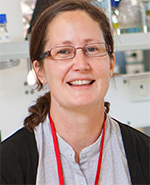
Associate Professor Tracey Dickson
Menzies Research Institute of Tasmania
University of Tasmania
Dr Dickson is a neuroscientist with a national and developing international reputation for using innovative cellular and animal models for determining the pathological basis underlying motor neuron disease, Alzheimer’s disease and the neuronal response to trauma. She is a Principal Research Fellow and member of the senior management team at the Menzies. She leads an ambitious and productive research team (two postdocs, five PhD students, one research assistant, one honours student). ‘Neurodegenerative disease and brain trauma’ is one of five key research nodes for the institute, and is a priority area in relation to infrastructure, strategic support and growth.
Tracey can contribute to the Think Tank her expertise in the area of neurodegenerative disease and trauma research and a strong commitment to improved clinical outcomes for those suffering from the hundreds of diseases resulting from dysfunction or degeneration of the nervous system. She has published more than 50 international papers in the areas of neurodegenerative disease and neurotrauma research. She has a particular interest in understanding and harnessing the brain’s capacity for structural remodelling and plasticity – and in particular developing and utilising technologies such as microfluidic separation “lab on a chip” platforms and also in vivo two-photon microscopy to enable these questions. She is a passionate postgraduate supervisor and mentor and communicator of science and research and believes there is great opportunity in neuroscience for those who are open minded to change and collaboration. She would like to be a part of this conversation and believes she can contribute.
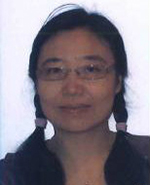
Dr Yulin Ding
Aerospace Division
Defence Science and Technology Organisation
Dr Ding obtained her PhD in the context of model checking, a branch of formal methods in computer science anda strongly mathematical modelling oriented field applied to software engineering. She then worked as a senior research associate at The University of Adelaide for two years where her job was research in software architecture description languages, also a mathematics oriented modelling field. She now works in software architecture, network management and human-machine interface (HMI). She was also involved in cognitive study (action research) and operations analysis. Most of her fundamental research (about 20 papers) was published via artificial intelligence conferences/journals. The maths she has extensively been involved with includes fuzzy logic, classic logic, graph theory, operations research, optimisation and kinematics. Her bachelors and masters by research degrees were in management engineering and computer science in the context of human machine training analysis and spatial geometry respectively.
Dr Ding has a wide spectrum of research experience across artificial intelligence, mathematical modelling and cognitive study. Her specialty is artificial intelligence, maths and modelling and also cognition, intelligence and executive function. She will discuss how artificial intelligence/neural networks are developed from simulation of the human brain, natural intelligence and executive function. She will detail the progression from the modelling level to detailed implementation in her field then analyse the human brain’s modelling and implementation capabilities. Mathematics was discovered/created by humans, and is another language to describe the world, similar to natural languages such as English, with semantics but with different syntax. People need to be trained for English so they can communicate freely, the same for maths. Dr Ding could also discuss how knowledge can be used across fields such as some biology phenomena and to specify computer networks, as machines are nowadays extensions of human brains and bodies.
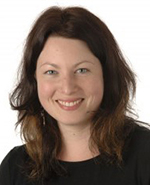
Dr Rony Duncan
Centre for Adolescent Health
Murdoch Childrens Research Institute
Dr Duncan’s key areas of expertise are bioethics and genetics. For the past 12 years she has researched a range of ethical issues associated with science and medicine and a large component of this has focused on genetic technology. Her doctoral research concerned the ethical implications of genetic testing in children for adult onset conditions such as Huntington disease. Her work has since broadened to include ethical implications of: whole genome analysis; adolescent care; genetic selection; genetic screening; prenatal diagnosis; determinations of competence and clinical psychology. She is particularly interested in contributing empirical evidence to ongoing theoretical debates.
With her specific expertise concerning the ethical implications of genetics, Dr Duncan will be especially interested in contributing to the discussions on neurogenetics that form part of this Think Tank. As someone who has been researching the ethical implications of science and medicine for more than a decade, she believes she will also be able to help identify and examine a range of significant ethical issues associated with brain research more broadly. In addition to this, she has a lot of experience working across disciplines and assisting in the transfer of knowledge between these (bioethics, adolescent health, clinical psychology and genetics). Therefore, she will also be able to think in a cross-disciplinary style to assist with integration of the many areas of research that hold relevance for neuroscience.
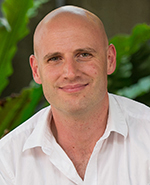
Associate Professor Alex Fornito
School of Psychology and Psychiatry
Monash University
Alex has more than 10 years of experience conducting brain imaging research in healthy and psychiatrically ill populations. His work principally involves the use of magnetic resonance imaging (MRI) to understand healthy brain function, map brain abnormalities in mental illnesses such as schizophrenia, and to uncover genetic influences on brain organisation. These questions are tackled using a systems neuroscience perspective to accurately characterise brain network structure and dynamics.
Relative to opportunity, Alex has shown a strong track record publishing more than 70 peer-reviewed articles in leading international journals and receiving frequent invitations to speak at major international conferences. He is an emerging leader in his field and has diverse expertise in psychology, neuroimaging (spanning structural, functional and diffusion MRI), genetics and complex network science. Comprehensively mapping the network structure of the brain – the so-called human connectome – has become a central goal of neuroscience in recent years and his work has been at the forefront of this field.
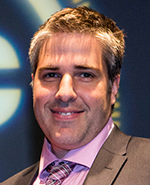
Dr Andreas Fouras
Mechanical and Aerospace Engineering
Monash University
Dr Fouras is focused on developing new imaging technology and applying this technology to the benefit of medical science and the wider community. Through the provision of new and uniquely powerful imaging tools he has been able to help shed light on important biological processes. A new perspective is often what is needed to solve the most difficult problems. One example is the discovery of the mechanism of modulation of platelet aggregation by hemodynamic shear – even in the absence of soluble agonists. Another example is the clarification of the complex mechanisms behind the co-behaviour of pathological and nearby healthy tissue in the lung.
Given that we have already picked the low-hanging fruit to progress our solutions to important problems, a multidisciplinary approach is needed. As a Mechanical Engineer working exclusively towards solving medical problems, collaboration and multidisciplinary thinking are deeply engrained in Dr Fouras's “research-DNA”. To progress the goals of the Think Tank, he would seek to: utilise his deep understanding of imaging, and his experience in building new imaging modalities to identify new sources of data; provide a unique perspective, illuminated by an understanding of mechano-biology as well as the capabilities of mathematics, computer modelling and inverse problem methods; and place himself as a linkage between the clinicians and biomedical scientists, at the coalface of brain research, and the vast untapped resource that is the large pool of physical scientists and engineers ready, willing, and able to assist them.
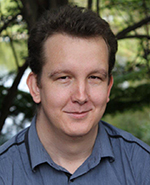
Dr Jurgen Fripp
The Australian eHealth Research Centre
CSIRO
Dr Fripp has a wide variety of research interests and expertise in image analysis and understanding, with a particular focus on developing robust, accurate and automated techniques for use in clinical (and other) applications. In particular, extracting standardised quantitative measures from MRIs and PET, primarily for potential use as biomarkers. He is also interested in neurogenetics, as well as combining structural, biochemical and functional information. This has involved several areas of research; a) MR and PET image analysis and quantification b) shape, appearance and temporal modelling; c) anatomical and biochemical spatial-temporal atlasing (mathematical modelling); d) registration and segmentation fusion; and e) feature selection, classification and data mining. The methods developed have been applied to various applications among them Alzheimer’s disease, prostate cancer and osteoarthritis.
Dr Fripp brings to the Think Tank a unique perspective integrating mathematical modelling, data mining, computer visualisation, advanced image analysis and a strong applied biomedical engineering background. He also has a demonstrated record of industry and clinical collaboration, which is resulting in clinically relevant implementation and application development of these techniques. He has a wide background knowledge, however his primary contribution to the discussions will be on advanced methods to allow robust and accurate “quantitative imaging and analysis” and how these can be more effectively utilised; and imaging derived computational models to describe spatial and temporal changing in ageing and with disease burden.
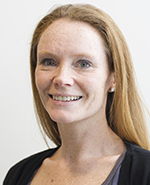
Dr Jan Fullerton
Mental Illness Theme
Neuroscience Research Australia
Dr Fullerton’s experience in neuropsychiatric genetics has allowed her to develop a career aimed at improving our understanding of the biological basis of mental illness. This interest began during her first postdoc in the psychiatric genetics laboratory at The Wellcome Trust Centre for Human Genetics in Oxford (2001-2005). More recently, at the Garvan Institute (2005-2006) and Neuroscience Research Australia (2006-2013), her work has focused on genetics of bipolar disorder and schizophrenia, leading to the discovery and characterisation of susceptibility genes, and involvement with the psychiatric GWAS (genome-wide association study) consortium. This work also involves the analysis of biomarkers and endophenotypes for mental illness, including cognitive and neuroimaging genetics.
Dr Fullerton’s intimate knowledge of the current state of genetic analysis and the genetic architecture of complex genetic traits, particularly bipolar disorder and schizophrenia, will enable her to contribute that knowledge into the discussions about the impact of neurogenetics on cognition, mental health and neurodevelopment. She will be able to comment on the possibility of using genetics for predictions of future mental health and genetic testing, the use of endophenotypes for gene identification, the issue of blurring phenotype boundaries to increase sample size for more powerful genome-wide association studies, and the future possibilities of personal genome sequencing. In being a part of this exciting Think Tank, she hopes to obtain insight into the views of other young scientists on how best to integrate data across specific fields of neuroscience, and use the opportunity to network, and as a source of inspiration for future collaborative efforts.
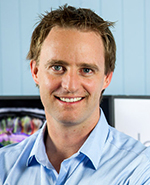
Dr Andrew Gardner
Centre for Translational Neuroscience and Mental Health
University of Newcastle
Dr Gardner’s research interests include traumatic brain injury (particularly sports-related concussion), psychometrics and neuropsychological assessment, cognitive function, ageing and neurodegenerative disease. He has completed postgraduate research on the acute and cumulative neuropsychological consequences of concussion. His doctoral thesis received the prestigious award for the Most Outstanding Dissertation for 2011 from the National Academy of Neuropsychology (USA). His current focus is attempting to delineate the effect of head trauma as a risk factor for later life neurodegenerative disease, neuropsychological testing in athletes and cognitive consequences of sports-concussion.
In view of this year’s Think Tank objective to integrate and synthesise a diverse, but interacting, range of neuroscience interests, Dr Gardner feels reasonably well versed to make a contribution. He believes his background in neuropsychology offers sufficient knowledge to contribute to aspects of the key areas of interest in the discussions pertaining to cognition, intelligence, executive function and neurodegenerative diseases, such as Alzheimer’s disease. He brings both clinical and research experience across each of these areas and looks forward to an opportunity to collaborate with others in this year’s Think Tank.
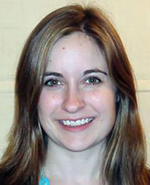
Dr Bronwyn Graham
School of Psychology
University of New South Wales
Dr Graham is interested in translational research, where basic processes are investigated in animals and then applied to humans in clinically-relevant settings. Her research centres around two questions: is the neurotrophin FGF2 a novel biomarker of individual differences in fear expression and inhibition in rodents; and how do sex hormones like estrogen modulate fearful emotion regulation in rodents and women? The overall aim of her research is to delineate biological mediators of increased vulnerability to anxiety disorders. The second question is particularly pertinent given that women are twice as likely as men to develop anxiety disorders.
Dr Graham’s primary goal is to bridge the gap between basic neuroscience and clinical research/practice, with a particular focus on translating developments in the neuroscience of fear regulation into policy and practice change in the treatment of anxiety disorders. To achieve this goal, she conducts basic neuroscience research in rodents, she then validates/expands these findings by investigating cognitive/emotional processes in healthy and anxious humans, and she is actively involved in the treatment of anxiety disorders through continuing practice as a psychologist. Her experience across these domains has taught her to effectively communicate basic scientific findings in multidisciplinary settings, to recognise areas of clinical practice that require more rigorous empirical investigation at a basic level, and to draw links between seemingly disparate research areas to make new discoveries. Her skills and research focus make her a valuable potential contributor to the Think Tank’s key area of ‘Cognition, Intelligence, and Executive Function’.
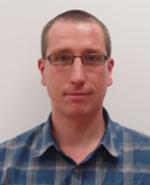
Dr Dave Hawkes
The Florey Institute of Neuroscience and Mental Health
University of Melbourne
Dr Hawkes is a virologist who designs and creates viral vectors for use in neuroscience research specifically to investigate the role of neuropeptides in mediating the behavioural, cardiovascular and neuronal effects of anxiety. He is also a science activist who campaigns for science based medicine through active participation in professional organisations (current Convenor of the Australian Society of Medical Research in Victoria), community based groups (administrator of the Stop the Australian (anti)Vaccination Network Facebook page; 20,000 visits weekly), and other social media (e.g., theconversation.edu.au and Twitter).
Since 2009 Dr Hawkes has been active in promoting, and sometimes criticising, science in the wider community. He thinks he can contribute passionate advocacy of science outside of the scientific community. Last year he attended the annual meeting of the Academy’s Early-Mid Career Researcher Forum and has remained active through Twitter forums. He has recently had a paper accepted which addresses questions about HPV vaccines in Australia, written with an epidemiologist and a computer modeller who he met online. His personal experience is that we are only scratching the surface of the possibilities of the internet, and social media in particular, in establishing collaborations, building new technologies, crowd sourcing information and as a tool for political advocacy. In conclusion, he thinks the use of social media and other communication technologies in advancing science is an area in which he could make a unique contribution to this year’s Think Tank.
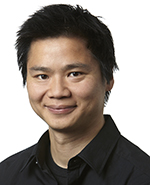
Dr Julian Heng
Australian Regenerative Medicine Institute
Monash University
Dr Heng studies the genetics of brain development, and his group takes two main routes of study: in the first approach, they study the role for transcription factors to instruct progenitor cells within the fetal brain to generate neurons, as well as to guide their assembly and final connectivity. In the second approach, they study the genetic basis of structural brain disorders (such as microcephaly) in humans and have identified novel genes which, when mutated, cause brain developmental defects. One important goal of Dr Heng’s research is to identify novel genetic markers for diagnostic testing of patients with brain developmental disorder.
Intellectual disability affects 2% of Australians (1-4% worldwide). Dr Heng’s research addresses the genetic basis of intellectual disability, and offers clear medical benefit for the screening and diagnosis of patients with neurodevelopmental disorders (such as microcephaly and neuronal migration disorder). Importantly, new research has drawn a potential link between the histopathological presentations of rare neurodevelopmental disorders (such as microcephaly; with an incidence of 1/100,000 live births) and prevalent neurobehavioural syndromes (such as autistic spectrum disorder, with an incidence of up to 1/160 individuals [source: Autism Advisory Board Report, 2005]). He believes that by studying the similarities (and differences) in the etiology of these disorders, it could be possible to develop a better understanding of the developmental principles that underpin the clinical presentation of these conditions. As such, he believes that his involvement in the key areas A (cognition) and B (neurogenetics) will stimulate discussion in those areas.
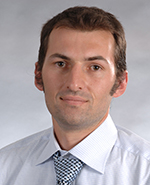
Dr Alex Hewitt
Clinical Genetics Unit
Centre for Eye Research Australia, University of Melbourne
Being an early career clinician-scientist Dr Hewitt, with his research group, aims to fill the niche between the clinic and laboratory. His main research interests lie in understanding the molecular mechanisms of neurodegenerative disease, in particular the blinding disease glaucoma. In 2012 he received a WA Young Tall Poppy Award and a Sayer Lecture Travel Award to visit the NIH. He is a co-author on more than 120 peer-reviewed publications. He has had continuous project grant support from the NHMRC since 2008 and is a CI (chief investigator) on a CRE (Centres of Research Excellence) grant.
It is a pivotal period for defining Australian neuroscience; with the recent announcements of the HBP (human brain project) and BAM (brain activity map). It is also an exciting time in molecular biology. We now have a vast array of tools, which can be directly applied to understanding almost any aspect of human biology or disease. Dr Hewitt’s research training has ensured a solid grounding in genetic epidemiology and a vast exposure to emerging biotechnologies (from epigenetic and proteomic fields). So why include an ophthalmic researcher? Aside from the fact that approximately one third of all sensory input to the brain comes from the eyes, and the retina provides an ideal framework for 'learning’ how to unravel the workings of a complex neural system, he believes that knowledge alone is not enough; it must be applied to make a difference. His clinical background, and knowledge of his own ‘APOE’ status, will ensure audacious goals will have a translational focus.
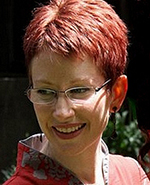
Dr Elizabeth Holliday
Centre for Clinical Epidemiology and Biostatistics, School of Medicine and Public Health
Hunter Medical Research Institute and University of Newcastle
Dr Holliday is a biostatistician with formal training in molecular bioscience, genetic epidemiology and statistics. Her research focuses on the analysis of large-scale genetic and genomic data to better understand the genetic architecture of inherited neurological disease, with a focus on ischaemic stroke. She seeks to identify both individual genetic variants influencing disease risk, and components of genetic risk contributed by combinations of multiple, individual variants. She also undertakes research seeking to identify genetic factors underlying related vascular states affecting multiple body systems (e.g., the brain, kidney and retina).
Dr Holliday has substantial experience in the large-scale, genetic analysis of inherited traits using data generated by high-throughput genomics platforms. She has worked in this field since 2004, and her career has thus paralleled major technological developments since publication of the Human Genome Sequence in 2003. With a background in the genetic dissection of neurological and psychiatric traits, she is uniquely placed to understand neurogenetic research in the context of current and emerging technologies. As an analyst, she also has unique insights into the potential knowledge/skills gaps that may limit both the effective utilisation of cutting-edge genomics data, and subsequent interpretation and translation of results by clinicians. With a skill-set spanning biology, mathematics/statistics and bioinformatics, Dr Holliday routinely communicates with scientists from different disciplines. She also currently leads analyses for several international genetics consortia and, in this capacity, liaises with scientists and clinicians with diverse perspectives to encourage multidisciplinary approaches to problem-solving.
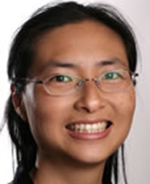
Dr Jean Yee Hwa Yang
School of Mathematics and Statistics
University of Sydney
Dr Hwa Yang’s research work has centred on the development of statistical methodology and the application of statistics to problems in genomics, proteomics and biomedical research. In particular, her focus is on developing methods for integrating expression studies and other biological metadata such as miRNA expression, sequence information and clinical data. As a statistician who works in the bioinformatics area, she enjoys research in a collaborative environment, working closely with scientific investigators from diverse backgrounds.
Dr Hwa Yang’s research experience with identifying and adjusting variability from different data, together with the ability to integrate multiple data types and sources, enabled her to contribute to the mathematics and modelling component of this year’s workshop. In addition, her ability to communicate with scientists from diverse background makes her a suitable candidate.
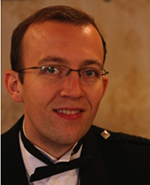
Dr Oliver Jones
School of Applied Sciences
RMIT University
Dr Jones’s research focuses on the application of analytical chemistry, particularly nuclear magnetic resonance and mass spectrometry based approaches, to a range of areas. A particular interest is metabolomics. Metabolomics is a functional genomic approach for describing the modification associated with a given manipulation (e.g., gene modification, toxicological insult, disease) in terms of changes in the global profile of metabolism of a cell, tissue or organism. He has a strong interest in environmental pollution and its health effects on humans, one area of which is the investigation of potential links between pesticide exposure and brain disorders such as Parkinson’s disease.
Metabolomics and related analytical techniques can be used to study brain chemistry in a number of ways. This might include flux measurements to understand the cycling of metabolites between neuronal and glial cells and how this process is influenced by drug intervention to the development of pattern recognition tools to identify metabolic profiles associated with a given disease process. These approaches are high throughput and could provide a rapid mechanism to screen for metabolic perturbations within brain tissue. Oliver also has an interest in developing new bioinformatics tools for examining multivariate data. Through his previous work at the Griffin Group at Cambridge University and in his current role as vice president of the Australian and New Zealand Metabolomics network (www.anzmn.com.au/), he has many connections to the metabolomics community in Australia.

Dr Jee Hyun Kim
Behavioural Neuroscience Division
Florey Institute of Neuroscience and Mental Health, University of Melbourne
Dr Kim’s research discovers why ‘good’ and ‘bad’ experiences are remembered and forgotten differently depending on one's age. Good and bad memories can teach us to seek after the good and avoid the bad. Using rodent models, she has identified that bad and good memories are particularly resistant to forgetting during adolescence compared to adulthood due to age-related differences in the brain. The difficulty in suppressing these memories led to greater relapse in adolescents following treatments to reduce anxiety and drug-seeking. In contrast, infancy was identified to be a robust period where treatments for these mental disorders were the most effective.
As a behavioural neuroscientist investigating the neurobiology of memory and forgetting across different ages, Dr Kim has relevant expertise in three of the four key areas of focus in this year’s Think Tank (A,B,D). She aims to extend her research into memory and forgetting processes in normal ageing, and has already given invited lectures on that topic at meetings such as the 2013 Dementia care forum organised by Alzheimer’s Australia. Her current collaborations are cross-disciplinary, involving psychologists, pharmacologists, neuroscientists and computer scientists, and she believes her experiences will aid in solutions to integrate different areas of brain research. Dr Kim acquired her PhD at the University of New South Wales, undertook postdoctoral training at Michigan University (USA), and is now a faculty member at the Florey Institute of Neuroscience and Mental Health, thus providing a variety of backgrounds and experiences for this year’s Think Tank.
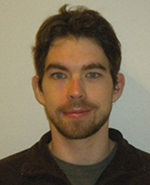
Dr Thomas Klaric
School of Medicine
University of Adelaide
Dr Klaric has spent almost eight years working in a neuroscience laboratory at the Stroke Research Programme at The University of Adelaide where he has been involved in a range of projects that have covered areas as diverse as developmental neurobiology, neural differentiation of mouse embryonic stem cells and various rodent models of stroke. During his PhD, he studied the role of the neural activity-dependent transcription factor Npas4 during early embryonic development. Npas4 is a master regulator of inhibitory synapse development and has important roles in synaptic plasticity and memory. His main research interests are synaptic plasticity, epigenetics, learning and memory.
Thomas considers himself to be a very creative and imaginative person (in addition to doing science, he is also a musician) and lateral thinking is one of his strengths - he hopes to contribute some novel and creative ideas to the group discussions. He enjoys collaborating with people from different disciplines to come up with innovative solutions to complex problems. As an example of this, he has recently been awarded a small grant to work with physicists from the Institute for Photonics and Advanced Sensing in order to develop a fibre-optic sensor that could be used to take measurements from a mouse brain in real time. With his strong background in molecular biology, he will contribute equally to the areas of ‘Cognition, intelligence and executive function’ and ‘Neurogenetics’ as he feels comfortable within both these areas.
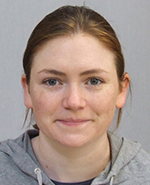
Dr Aoife Larkin
Queensland Brain Institute
The University of Queensland
Dr Larkin is interested in the interplay between genes and behaviour: how does our genetic code bestow a unique perception of our environment, and how is this altered with experience? During her PhD, she used Drosophila melanogaster as a model system to investigate the mechanisms that underlie olfactory habituation, a simple form of learning and memory. Changes in behaviour were traced to altered central circuitry, implicating plasticity of GABAergic neurons as a potentially important mechanism for learning and memory. Currently, she is using Drosophila to study how perturbation of cell adhesion molecules (neurexins and neuroligins) may lead to altered synaptic plasticity and behaviours.
Dr Larkin’s experience in studying synaptic plasticity at many levels, from genes to circuits to behaviours, gives her a solid platform from which to contribute. She also thinks that the importance of employing model organisms in the study of brain function, including in establishing biological relevance of particular genes and circuits to human neurodevelopmental disorders, may at times be underestimated. Having worked with Drosophila melanogaster for more than seven years, she fully appreciates the value of model organisms in helping to shed light on many complex questions in neuroscience. She has experience not only with Drosophila, but also in modern techniques that are becoming increasingly popular, such as in vivo calcium imaging. She also completed her PhD in another country (Ireland), which may be advantageous for contributing new ideas to the future of brain research in Australia.
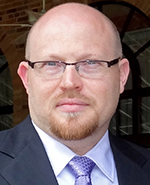
Associate Professor Simon Laws
Centre of Excellence for Alzheimer’s Disease Research and Care
School of Medical Sciences
Edith Cowan University (ECU)
Dr Laws leads the Alzheimer’s disease (AD) genomics program within the larger AD Research Centre at ECU. He is also the deputy Chief Scientific Officer of the CRC for Mental Health. His research in neurogenetics has a particular emphasis on the utilisation of sophisticated genomic approaches that will allow for the identification of genes that would otherwise not be discovered by traditional methodologies. Specifically: (1) Combining high-throughput genotyping technologies with quantitative phenotypes to gain an understanding of genetic variability underlying cognitive and pathological processes. (2) Identifying rare genetic variants in AD using next-generation sequencing technologies in both sporadic and inherited forms of the disease.
With life expectancy increasing worldwide, dementia, and Alzheimer’s disease (AD) specifically, poses an increasing medical and socio-economic challenge. As such, the focus of this Think Tank is highly pertinent to Dr Laws’ area of research. The focus on “inspiring smarter brain research” will have the net effect of increasing our understanding of neurological disorders and this will enhance the likelihood of successful intervention strategies. Through his 15 years (five as a student) of national/international exposure to dementia research, with a particular focus on the integration of multidisciplinary streams with his area of research emphasis, neurogenetics, he can make an important contribution to this Think Tank. This contribution will not only be across the areas of neurogenetics and dementia but he will also bring his experience in interdisciplinary research to the table.
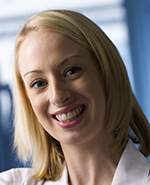
Dr Tammie Money
Department of Psychiatry and Department of Medicine (Royal Melbourne Hospital)
The University of Melbourne
Broadly Dr Money’s research interest is in neuropsychopharmacology but, more specifically, includes studying the molecular mechanisms involved in the pathophysiology of schizophrenia with the view to developing biomarkers of treatment response and new treatment targets. Her experience has been working with post-mortem human brain tissue from subjects with schizophrenia and mood disorders to investigate molecular factors associated with the regulation of genes of interest. Recently she has gained experience working with patients in a clinical setting using diagnostic instruments and neuropsychological testing to gather a patient cohort for a collaborative project in the CRC for Mental Health.
Dr Money’s experience as a research fellow in the Centre for Research Excellence in Translational Neuroscience (2012 to present) enables her to identify barriers that may hinder the translation of research into practice. This ensures that research is undertaken in the most efficient way possible to best facilitate translation into the clinical setting. In addition, she has actively participated in community engagement forums where researchers and key stakeholders were able to work in a collaborative partnership in order identify common goals and ways to address each group’s individual needs. Her unique opportunities to work in a laboratory and in a clinical setting allow her to better develop research questions that are most likely to address clinical problems and in turn improve treatment and the quality of life of patients. These skills will enable her to actively collaborate, learn and share expertise with others in the Think Tank.
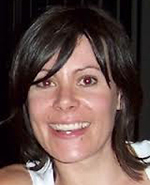
Dr Angela Morgan
Population Health Theme
Murdoch Childrens Research Institute
Dr Morgan is an NHMRC CDA (career development award) Fellow and Co-leader of the Hearing, Language and Literacy research group at the Murdoch Childrens Research Institute (MCRI). Her research examines the neural bases of childhood communication disorders. Angela trained in cutting-edge structural and functional MRI techniques during early postdoctoral work at University College London. She now applies these methods to reveal prognostic brain markers for inherited and acquired childhood speech and language disorders. Angela also takes a population approach by drawing samples from large, well phenotyped community cohorts. She is internationally recognised in her field, being regularly invited to provide plenary lectures in the US, UK and Europe.
Dr Morgan has unique cross-disciplinary training across MRI, developmental neuroscience, neurorehabilitation, genetics, speech pathology and epidemiology. Hence she is well positioned to facilitate cross-talk between groups and encourage the integration of different areas of brain research at local and national levels. Further, her institute is an international leader in population-based approaches to childhood health research. MCRI has a number of world-leading population-based longitudinal studies with data collected across the lifespan. Brain research to date has been plagued by small highly selected clinical samples. Given the recent National Institutes of Health (NIH)/US Government initiative, now is the time to think big and plan powerful large-scale studies based on population cohorts. Dr Morgan believes the Think Tank will provide a valuable forum for trying to unite specialised cohorts across Australia for future research applications to the NIH that will make a significant and long-lasting contribution to our understanding of the human brain.
Professor Pablo Moscato
School of Electrical Engineering and Computer Science, Faculty of Engineering and Built Environment
The University of Newcastle
Dr Moscato is the leader of a highly interdisciplinary research centre that concentrates on molecular mechanisms in cancer and neurodegeneration. The centre has produced approximately 100 publications per year in top journals in its relevant fields. Dr Moscato’s research has led to the creation of journals dedicated to the subject (for instance Memetic Computing, by Springer). He has led large studies in Alzheimer’s disease, multiple sclerosis and childhood absence epilepsy. He combines state-of-the-art mathematical methods and algorithm design with sophisticated biological analysis. His Google Scholar profile indicates the uphill trend on the impact of his research on many fields of science and technology, making him one of Australia’s most cited professors of Computer Science.
Dr Moscato has been associated with the ARC Centre of Excellence in Bioinformatics since 2003 and has been its Chief Investigator since 2007.
The experience he can bring to the discussion includes: introducing a unifying hallmark of cancer based on the changes of information theory; proving the usefulness of an information-theory driven methodology by applying the same technique developed above to the identification of Alzheimer’s disease biomarkers in hippocampus: founding and organising the Biomarker Discovery Conference at Shoal Bay, NSW, bringing a prestigious group of international speakers to our shores in 2010 and 2012; leading the team that developed the first transcription factor map that can explain most of the gene expression variation observed in molecular signatures of multiple sclerosis; developing a novel mathematical model and an association solution procedure based on combinatorial optimisation to identify optimal drug combinations for cancer therapeutics; developing the first method to distinguish childhood absence epilepsy from controls by the analysis of their clinical background EEG records: using a panel of abundances of 120 signalling proteins in plasma to develop a novel mathematical method for biomarker discovery that led to molecular signatures of predicting clinical Alzheimer’s disease symptoms with 96% total accuracy; designing and directing the study that provided the first in-depth analysis of the Alzheimer’s disease neuroimaging initiative proteomic dataset (this achievement generated international media).
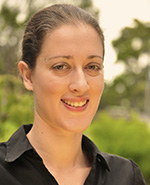
Dr Elizabeth New
School of Chemistry
The University of Sydney
Dr New’s research involves developing chemical tools to study neurodegenerative disease. Such tools are useful in MRI studies of animal models or fluorescence microscopy in cell culture. In particular, Dr New’s team develops tools that are sensitive to the oxidative stress and imbalances in metal ions linked to neurodegenerative diseases. These tools are useful in assessing changes that occur in disease genesis and progression, and in evaluating potential treatments for neurodegenerative diseases. This interest continues from Dr New’s postdoctoral work at the University of California Berkeley, developing fluorescent markers that could detect movement of copper in response to neuronal stimulation.
Dr New is passionate about developing better technologies to understand the brain and neurodegenerative diseases. As a chemist working in the area of neurodegenerative disease, she approaches the problems from a different perspective to many of the neuroscientists and biochemists also tackling these diseases. Chemistry can play a particularly valuable role in understanding neuroscience as it can shed light on events in the brain at the molecular level. Dr New will be able to contribute this perspective to the Think Tank, as it is essential to identify what molecular questions remained unsolved, and how they can best be approached. A cross-disciplinary approach is essential in addressing a system as complex as the brain, and Dr New, as a chemist with a strong background in the study of biological systems, can contribute well to such discussions.
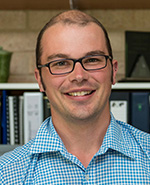
Dr David Nisbet
Research School of Engineering
Australian National University
Dr Nisbet’s group works in a relatively new field know as tissue engineering, designing and fabricating synthetic scaffolds to support cells for brain repair. His team has developed a number of methodologies to ‘modify’ polymer scaffolds to promote the support of neural stem cells both in vitro and in vivo. Dr Nisbet’s group focuses on cell transplantation technology, specifically on the fabrication of cellular microenvironments that are capable of chemically and physically supporting the survival, differentiation and neuronal connectivity of transplanted cells. By engineering scaffolds we can mimic some of the essential aspects of the extracellular matrix to improve cell transplantation technology.
Dr Nisbet has a range of interdisciplinary skills that would represent a valuable contribution to this year’s Think Tank. He is an interdisciplinary scientist with expertise that bridges the traditional fields of materials engineering, chemistry and neuroscience. His research lies in the field of nanobiotechnology and tissue engineering. More specifically he deals with the fabrication of a favourable milieu for neural stem cells, which encompasses a variety of in vitro and in vivo applications for injury repair and/or disease modification within the brain. He works on the concomitant presentation of growth factors, selected chemistries, surfaces and morphologies to cells to improve upon current neuroscience technologies. He currently collaborates extensively within the neuroscience field and believes that an interdisciplinary approach will be essential to repairing damaged neural circuits.
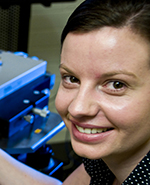
Dr Emily O’Brien
School of Computer Science, Engineering and Mathematics
Flinders University
Dr O’Brien’s research interests centre on the development of technology and solutions to assist different types of medical conditions. Her strong background in neuroscience resulted from her PhD thesis and postdoctoral research experience at Bionic Vision Australia where she specialised in mapping the anatomical and neural cell changes that develop in the blind retina. This cell-based research led to design developments of the bionic eye to treat blindness. Her current role, at Flinders University, focuses on developing medical devices to treat a range of medical conditions and is engineering focused with knowledge applied in electronics, software development and mathematical modelling.
Due to her previous research experience at Bionic Vision Australia Dr O’Brien recognises the necessity and benefit that cross-discipline collaborations bring to medical issues, as each discipline offers unique insights. She has been involved with many workshops and discussion groups for the bionic eye project that brought together specialists from multiple areas, such as surgeons, engineers and clinicians, to solve issues. Her skills in both neuroscience and biomedical engineering offer the Think Tank a unique spectrum of science related disciplines - for the development of ‘smarter’ brain research in Australia. Her engineering background will assist with discussions that are particularly focused on how technology can provide innovative solutions for medical issues so that advancements can be made in the field of neuroscience.
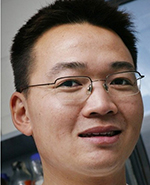
Dr Ken Pang
Walter and Eliza Hall Institute
The University of Melbourne
Dr Pang trained clinically as a paediatrician, and specialises in treating children and adolescents with a variety of mental health disorders, including depression, anxiety, autism and ADHD. In addition, through the course of his PhD studies in Australia and postdoctoral work overseas, he has developed a strong basic research interest in regulatory RNAs. His long-term goal is to leverage his clinical and research interests to improve understanding of the genetic basis for childhood psychiatric disorders so as to facilitate better diagnosis and treatment.
As an active clinician working in the field of child and adolescent psychiatry as well as a basic scientist with broad experience in molecular and cellular biology, bioinformatics, mouse genetics and animal behavioural models, Dr Pang will bring a unique perspective to this year’s Think Tank. More specifically, his interest in uncovering the genetic basis for psychiatric disorders that arise in childhood accords well with one of the key areas of the Think Tank: ‘Neurogenetics: inherited diseases and developmental biology’.
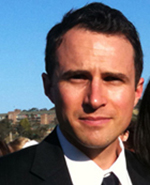
Dr Joel Pearson
Psychology
University of New South Wales
Dr Pearson’s research is concerned with uncovering the brain mechanisms of imagination, sensory perception, decision-making, learning and memory in humans and applying these findings to clinical practice and everyday problems; and also finding new ways to map and model the human brain. He has a strong philosophy that cross-disciplinary or anti-disciplinary collaborative work is the most effective way to make large jumps in research and discovery. Hence, his lab members come from mathematics, visual arts, architecture, medical imaging, social psychology, vision science and cognitive neuroscience. They utilise four main strategies of empirical research: behavioural psychophysics, functional and anatomical brain imaging, non-invasive brain stimulation and pharmacology of the brain and mind.
Dr Pearson brings a unique cross-disciplinary perspective to the Think Tank – cognitive neuroscience and psychology perspectives – plus cutting edge brain imaging and brain stimulation knowledge. His lab is working on new methods to analyse large brain datasets. In addition, he has extensive experience in utilising sophisticated behavioural and non-invasive neural stimulation techniques (transcranial magnetic stimulation and transcranial direct current stimulation) research methods to map the human brain. Dr Pearson runs his lab of more than 15 in a cross-disciplinary or even anti-disciplinary manner, incorporating input from many fields, for many different applications – along the lines of the MIT media lab. Such a hands-on multidisciplinary approach comes from his experience studying art and filmmaking before turning to cognitive neuroscience. This mix of different perspectives plus cutting brain science knowledge is a perfect fit to this year’s Think Tank.
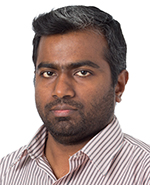
Dr Sivalogeswaran Ratnasingam
Computer Vision Research Group, NICTA
National Australia Canberra Research Laboratory
During his DPhil (University of Oxford) Dr Ratnasingam worked on human colour constancy and developed algorithms, an illuminant invariant chromaticity space, and optimum sensors for achieving colour constancy with machine vision systems. During his postdoc (University of Ulster), he worked on modelling the human haptic system starting from the mechano receptors to the primary somatosensory cortex. In particular, he developed these models with self-organising maps and spiking neural networks and tested the model using a Shadow Robot hand mounted on a Schunk motion manipulator of seven degrees of freedom. Currently, at NICTA, he is working on modelling the human visual system starting from the retina to the V4 of the visual cortex. He has developed a model using spiking neural network that can explain the colour constancy achieved in the early visual regions using a double colour opponent process. In the future, he intends to complete a model that explains the visual processing involved in the human visual pathway for colour perception and recognition. The ultimate goal of his research career is to integrate the two models (haptic and visual models) to make an autonomous robot that can be used for rehabilitation purposes.
Dr Ratnasingam has strong knowledge and experience in modelling the human haptic and visual system, and a very good understanding of how external stimulus is encoded and processed in the neural system and also neural plasticity. The knowledge he has acquired in individual neural information processing and processing in the subcortical level, and developing biological models for colour constancy, character recognition and haptic object recognition will be valuable for other researchers, particularly experimental neuroscientists. Currently, in experimental neuroscience, large amounts of measurements have been collected however, they are studied in an ad-hoc manner and the lack of computational models slows down the understanding of the brain neural processing as a whole. The key direction for neuroscience is to develop biologically plausible models and validate them with biological measurements. Dr Ratnasingam has developed biologically plausible haptic and visual models that would be useful for neuroscientists to further understand and to interpret their measurements.
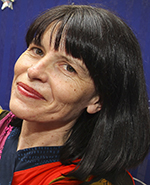
Dr Corinne Reid
School of Psychology and Exercise Science
Murdoch University
Dr Reid is co-founder and Clinical Director of the Project KIDS neurodevelopmental research program. Since 1995 she has worked with more than 2500 children exploring the typical and atypical neurocognitive developmental trajectories in childhood. Her current focus is in untangling the neurodevelopmental sequalae of prematurity, childhood illness, mental health issues and injury. She has developed a unique child-friendly research methodology to assist in conducting comprehensive whole-of-child assessments that draw together brain based measures such as EEG and MRI; psychometric measures such as WISC-IV; and experimental behavioural measures that her team has developed. Our translational program includes cognitive training interventions.
Dr Reid will bring her experience of developing the Project KIDS neurodevelopmental research program: a unique patient-centred research methodology that is sensitive to the developmental needs of children with complex comorbid presentations. These children are highly sensitised to medical intervention but respond well to Project KIDS’ way of working, enabling intensive and comprehensive case profiling within a longitudinal framework – a more powerful methodology than multiple studies each exploring one issue with one or two key measures. Dr Reid has also developed this model to be interdisciplinary and translational in nature. Currently her team works with neuropsychologists, clinical psychologists, paediatricians, nurses, and allied health researchers and clinicians. Their commitment is to test new treatment options developed in response to deficits identified in profiling work. Dr Reid brings to the Think Tank the potential for developing new collaborative partnerships. Each year she works with up to 120 children and involved up to 12 research partners in conjoint questions of interest.
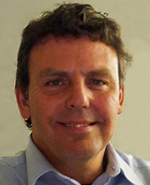
Associate Professor John Reynolds
Department of Anatomy
Basal Ganglia Research Group
University of Otago
The primary focus of Associate Professor Reynolds’s research is on learning and movement generation processes in the basal ganglia and cerebral cortex, with a particular focus on normal and disordered synaptic mechanisms in Parkinson’s disease and stroke. In the basal ganglia the emphasis is on unravelling the normal role of dopamine in learning and memory in vivo. Normal functioning of this process is critical to our ability to learn and perform new skills, whereas dysfunction of cells in the substantia nigra and striatum underlies the pathophysiology of brain disorders such as Parkinson’s and Huntington’s, respectively. This research involves a variety of techniques including electrophysiological recording, molecular biology, immunohistochemistry and operant behaviour.
Dr Reynolds’ contribution to this Think Tank will include: 1) Translational Neuroscience thinking - engaging in ideas and initiatives that will bridge between fundamental cellular neuroscience to behavioural outcomes, to understand the mechanisms of normal and unhealthy brain function in humans, and the application of strategies to help recover function after injury. 2) Thinking across the Tasman - how could and should we work better across the Tasman to improve outcomes for neurological disorders in our people? Are there any funding opportunities that can help us do this? It is important for progress to share our limited resources and institute conversations across institutes, states and nations.
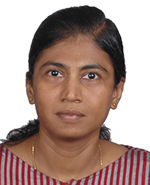
Dr Chandanie Senadheera
Department of Psychiatry
Faculty of Medicine, University of Ruhuna, Sri Lanka
Dr Senadheera has been working as a co-investigator of a research team studying cognitive functioning in the elderly since 2011. She is implementing a study to validate a screening tool and a comprehensive neuropsychological test battery to assess cognitive functioning such as general cognitive ability/intelligence, language abilities, verbal/visual memory, and attention and executive functioning of healthy older population. Data gathered from nearly 200 subjects are being currently analysed. A grant proposal has been submitted to NIH for further clinical studies. In addition, Dr Senadheera is the principal investigator of a study aiming to research neurodevelopmental abilities of children.
She will be able to share findings from the above study, which has data on different components of cognitive functioning of community-dwelling healthy older adults aged 50-80 years. Other than data on different test items such as how and what cognitive functions change with age and what effect some of the socio-demographic characteristics have on cognitive functions, this study also presents lessons on how to develop/adapt neuropsychological test batteries for a rural older population in a third world country.
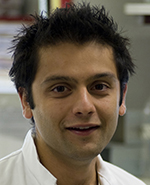
Dr Bilal Sheikh
Development and Cancer
Walter and Eliza Hall Institute
Dr Sheikh has recently completed his PhD at the Walter and Eliza Hall Institute (WEHI), studying epigenetic changes that are essential for maintaining the self-renewal of stem cell populations, namely neural and haematopoietic stem cells. In an extension of this work, his current research focuses on studying the impact of these epigenetic changes on both ageing (senescence), and its link to cancer. His future interests are to continue working in this field, looking at the impacts of epigenetic changes associated with senescence on the neural and haematopoietic systems, and further establishing a link between senescence and cancer.
Dr Sheikh has vast experience in the neuroscience field, having done a neuroscience major during his undergraduate degree. In addition, he carried out research in the field of adult neural stem cells, and mental disorders including Noonan syndrome during his PhD. It is hoped that adult neural stem cells will underpin treatments for age-related mental disorders such as Parkinson’s. Hence, being an early career researcher with a background in both ageing and neuroscience, he will be a good fit for the discussions at the Think Tank. In addition, having previously served on a number of committees, such as president of the WEHI student committee, he has experience in discussing issues and ideas, and helping form consensus on potential solutions.
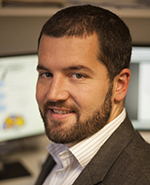
Dr James Shine
Brain and Mind Research Institute
The University of Sydney
Since beginning his PhD in early 2010, Dr Shine has used his unique combination of clinical and research skills to organise four behavioural trials and three large neuroimaging studies in Parkinson’s disease, exploring the role of neural network dysfunction in the pathophysiology of two disabling symptoms of Parkinson’s disease. These studies have led to the publication of 20 peer-reviewed manuscripts (11 as first author). His research has attracted significant media attention and has frequently been featured on national radio and television news, as well as the ABC’s Catalyst program.
Dr Shine’s PhD research has given him an opportunity to contribute to new paradigms in a rapidly evolving field, and his long-term career aim is to build and lead a major research program that will exploit the power of emerging brain-imaging technologies to shed increasing light onto this fascinating topic. As a junior doctor with a strong research background, he is ideally placed to comment effectively on matters of both clinical and research importance, assisting in the identification of key questions that inform applied problems as well as improving or understanding the mechanisms underlying the function of the human brain.
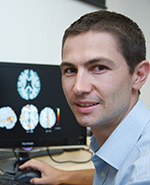
Dr Tim Silk
Developmental Imaging
Murdoch Childrens Research Institute, Royal Children’s Hospital
Dr Silk is an early career researcher focusing on neuroimaging of children, primarily paediatric neurodevelopment and associated disorders and has extensive experience using the latest, state-of-the-art imaging acquisition and analysis methods. His research, combining cognitive neuroscience, neuroimaging and molecular genetics, in the context of endophenotypes and possible biomarkers, is both timely and up to the minute. It is the crucial next step for understanding clinical disorders such as ADHD and is at the forefront of current research in neuropsychiatry.
Regarding the four key Think Tank focus areas, his research has primarily focused on cognition and executive function, and he is currently starting in neurogenetics. Dr Silk has been acquiring neuroimaging sequences similar to the current large-idea projects such as the Human Connectome Project, and is very excited by President Obama’s recent BRAIN announcement. He is a big believer in pooling international datasets in order to maximise the scientific value of the collected data. He also believes neuroimaging is going to play a huge part in the mental health sector, in advancing clinical evaluations, distinguishing people at risk of developing a disorder, the course of the disorder, or whether they will respond better or worse to certain interventions.
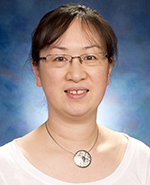
Dr Karen Siu
Monash Biomedical Imaging
Monash University
Dr Siu is an expert on x-ray imaging using synchrotron radiation, in particular phase contrast techniques and micro-computed tomography. These high intensity x-ray sources provide new opportunities for high contrast and high resolution imaging, particularly for the soft tissues in living specimens, which are not possible using conventional sources. Her research interests are primarily focused on dynamic, functional imaging of the lungs and airways for the detection and assessment of airway diseases. She is currently a Senior Research Fellow at Monash Biomedical Imaging, Monash University, and 50% seconded to the Imaging and Therapy Beamline of the Australian Synchrotron.
The Think Tank will provide an opportunity for Dr Siu to share her expertise in novel x-ray synchrotron imaging techniques with other participants in the area of brain research. Although challenging to implement in the brain, these methods of imaging provide vastly improved spatial resolution (down to individual neurons in specialised micro-computed tomography, for example) over conventional clinical and pre-clinical methods such as CT and MRI. These interactions will aid in building new collaborations. In particular, Dr Siu is in a unique position to implement these techniques at the recently opened Imaging and Medical Beamline, at the Australian Synchrotron, as she is a staff member of the facility. In addition, Dr Siu is able to assist researchers to access state-of-the-art preclinical imaging facilities (9.4T small animal MRI, small animal PET/SPECT/CT) at Monash Biomedical Imaging.
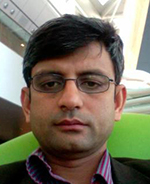
Dr Hari Subramanian
Asia-Pacific Centre for Neuromodulation
UQ Centre for Clinical Research (UQCCR)
Dr Subramanian investigates brain mechanisms involved in emotional expression. His focus is on a particular area in the midbrain known as the periaqueductal gray (PAG). PAG lesioning renders the animal (and humans) mute and akinetic and incapable of exhibiting emotional behaviour except very basic survival behaviour (respiration and autonomic regulation). The goal of his research is to delineate precise midbrain neuronal circuitry, neurotransmitters, modulators and receptors in the PAG as well as forebrain-midbrain-brainstem pathways specifically involved in emotional expression and its motor patterning. He is also expanding his research to investigate the effect of deep brain stimulation (DBS) on emotional disorders. The Asia-Pacific Centre for Neuromodulation at UQCCR has been established as a neuromodulation innovation centre, emphasising the integration of research, education and clinical care. Deep Brain Stimulation (DBS) is emerging as an important treatment for patients suffering from Parkinson's disease. Yet the actual mechanism of DBS is unknown. An understanding of the integrative mechanisms of DBS on a localised neural circuit depends critically upon a detailed knowledge of the properties of each cell involved. Such fundamental data will aide in the application of DBS not only for Parkinson's disease, but also to many other neurological diseases such as obsessive compulsive disorder (OCD) and, neurogenic vocalisation, speech and language disorders in the future. Projects in Dr. Subramanian’s laboratory aims to bridge the disciplines of neuroanatomy, systems neurophysiology and neurosurgery.
Dr Subramanian’s contribution to this Think Tank will encompass three aspects: 1) Scientific ideas; to engage in ideas and strategic initiatives that will help seize this moment to expand and strengthen a field that is recognised as solving perhaps the greatest scientific challenge of our time - how the brain works and how to prevent and treat the more than 1000 diseases attacking it. An example would be Brain Research through Advancing Innovative Neurotechnologies (BRAIN). 2) Neuroscience advocacy; effective advocacy and communication about neuroscience developments over the past several decades that will help capitalise on today’s exciting opportunities. 3) Global coordination; scientific discovery is a global endeavour. Funding gaps in one part of the world inevitably impact us all, and advocacy strategies have to be adapted from one nation to the next. Thus, by sharing information across borders, we can help scientists develop concrete strategies for use across nations.

Dr Ai Huey Tan
Neurology/Internal medicine
University of Malaya, Kuala Lumpur
Dr Tan’s research interest is in neurodegenerative disorders, with a special interest in Parkinson’s disease and its non-motor/neurocognitive aspects. She is currently working on a PhD on ‘Parkinson’s disease: brain and gut’. She has completed phase one of this project looking at the prevalence and clinical correlates of helicobacter pylori infection (HPI) and small intestinal bacterial overgrowth (SIBO) in Parkinson’s disease. Dr Tan has been exposed to the broad principles of performing clinical research, under the supervision of mentors who are experienced and have a strong record. She has been involved from the start of these projects, from conception to collection of data from patients (more than 100 patients with PD studied so far), to analysis and write-up. The projects have found a significant association of HPI with worse motor and cognitive function in PD. The team is now embarking on a randomised double-blind placebo-controlled study to look at the effects of HP eradication in PD. They are also looking more in depth into neurocognitive and neuropsychiatric aspects of PD, and also the potential role of neuro-gastrointestinal hormones transmitters/metabolites such as ghrelin, leptin, interleukin-6 and others in PD.
Although relatively new to medical research, Dr Tan has spent the past few years fully immersed in clinical medicine/clinical neurology, and will bring a fresh and useful perspective to the discussions at the Think Tank. She has varied interests and has been involved from high school days in community-related activities (e.g., as a La Sallian community leader and later, as a junior doctor, running a ‘street clinic’ in an impoverished part of Kuala Lumpur) and extra-curricular activities (e.g., debating at an international level at university). She comes from a multi-ethnic society in Malaysia and this will add a further perspective to the discussions. Dr Tan is keen to learn more from others at the meeting, and hopes to bring back fresh ideas and perspectives to her local research.
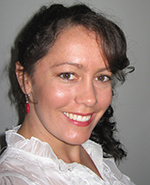
Dr Deanne Thompson
Victorian Infant Brain Studies, Clinical Sciences
Murdoch Childrens Research Institute
Dr Thompson is an internationally recognised leader in the field of paediatric neuroimaging involving preterm populations, and currently leads the Victorian Infant Brain Studies neuroimaging analysis team at the Murdoch Childrens Research Institute. She coordinates neuroimaging analyses for eight clinical research studies, while actively teaching and mentoring five research assistants and seven PhD students. She has almost 10 years of experience and expertise in the application of neuroimage processing tools and techniques to address clinical questions relating to premature infants, children and adolescents, finding causes of brain abnormalities and their impact on function: including cognition, intelligence and executive functioning.
Dr Thompson has knowledge in neuroscience and expertise using MRI to answer questions relating to cognition, intelligence and executive functioning. MRI is being used more and more in order to find brain structure-function relationships, and to find early markers for later cognitive dysfunction. Therefore her discipline will be a valuable contribution to the Think Tank sessions. Throughout her undergraduate degree she also majored in genetics, and will therefore bring an interdisciplinary flavour. Dr Thompson also brings knowledge and expertise gained from local and international collaborations which she has initiated and maintained both locally (Melbourne Brain Centre, and Florey Institute for Neuroscience and Mental Health), and internationally (Washington University in St Louis, Harvard Medical School Boston, and University Medical Center, Utrecht). She believes different research disciplines and international peers have a lot to learn from each other, and she looks forward to learning from and contributing to this year’s Think Tank.
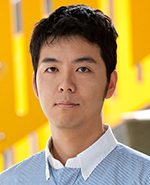
Associate Professor Naotsugu Tsuchiya
School of Psychology and Psychiatry, Faculty of Medicine, Nursing and Health Sciences
Monash University
Dr Tsuchiya’s main research interest is the neuronal basis of consciousness: why does some type of electro-chemical neuronal activity in the cerebral cortex (but not in the cerebellum) generate consciousness? To reveal the neuronal basis of consciousness, he has invented a novel visual illusion and quantified its effects with psychophysics, studied behaviours of lesioned patients who lost subjective feeling of fear, and directly recorded neuronal activity inside the brain of awake epilepsy patients. Dr Tsuchiya argues that neuronal mechanisms of consciousness are distinct from those of attention, which has been highly influential in the study of consciousness.
His interest and background in the study of the neuronal basis of consciousness contributes to three of the Think Tank’s key areas: cognition, artificial intelligence, and end-of-life issues. ‘Cognition’ is relevant to most of his previous work: non-conscious processing, emotion, intracranial recording in humans and the relationship between attention and consciousness. Both artificial intelligence and end-of-life issues are relevant to his recent theoretical/computational work on measuring the levels of consciousness based on neuronal activity (under review for Current Biology). He has worked on loss of consciousness during anaesthesia and sleep, and plans to extend this work to end-of-life issues, to try to refine the measurement of consciousness of coma and vegetative state patients or non-speaking animals. This line of work will result in a framework for measures of consciousness that can be applied to artificial systems.
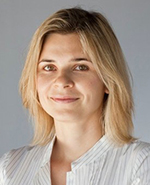
Dr Jana Vukovic
The Queensland Brain Institute
The University of Queensland
Since joining Professor Perry Bartlett’s laboratory in 2009 as a postdoctoral research fellow, Dr Vukovic has focused her research on better understanding the role of neurogenesis in learning and memory. Her most recent findings show that presence of immature adult-born neurons within the hippocampus is critically important for optimal learning, even before they start to play a possible role in remembering. She has also demonstrated that the resident immune cells of the brain (microglia) directly and differentially influence the birth of new neurons in the hippocampus under various conditions.
Simulating the birth of new neurons in the brain is thought to be a promising approach to alleviating learning and memory deficits. However, a number of questions remain to be addressed: 1) How do new neurons contribute to learning and memory? 2) Is there a direct relationship between cognitive decline and reduced neurogenesis? 3) How do different factors (e.g., exercise, ageing and immune status) influence neurogenesis? 4) How should we explore cognitive deficits in animal models? These questions are directly relevant to the Think Tank topics on dementia, ageing, cognitive function and intelligence. As a basic researcher in this area, Dr Vukovic can offer insights on the role of neurogenesis in learning, memory retrieval and behaviour. She believes she can make a positive contribution to the debate and the thinking up of new ideas to better understand brain function in health and disease.
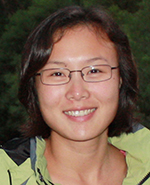
Dr Yan Yan
Department of Chemical and Biomolecular Engineering
The University of Melbourne
Dr Yan’s current research is largely directed towards understanding how nanoengineered materials interact with biology systems, such as cancer cells, and how such interactions can be controlled and exploited for advanced drug delivery. The research focus has been placed on uncovering key particle attributes (such as surface chemistry, geometry) and underlying biological mechanisms that govern the nanoparticle behaviours by using advanced imaging and proteomics techniques. These studies will provide fundamental information for designing intelligent nanoparticles that can effectively circumvent physiological barriers, such as blood brain barriers, for a range of biomedical applications.
Dr Yan’s research interests are in the area of nanomedicine. This is a rapidly growing new scientific space, fuelled by an ever-increasing pressure from society for more effective treatments. The integration of nanomaterials and neuroscience is unique and exciting, promising new ways to increase transport across the blood brain barrier and addressing many currently intractable diseases, such as Alzheimer’s. Therefore, it is highly beneficial to engage and establish communication channels for the scientists and clinicians working in neuroscience and nanoscience at the early stage of development. The Think Tank provides ideal forums for such interactions with presentations of frontier multidisciplinary research in neuroscience. Dr Yan considers it is a most desirable opportunity for gaining insights into the challenges and prospects in neuroscience and for discussing ideas with the leading scientists in the field.
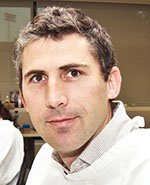
Dr Justin Yerbury
School of Biological Sciences
Illawarra Health and Medical Research Institute, University of Wollongong
Dr Yerbury’s work is directed at understanding the molecular events leading to motor neurone disease (MND). Protein inclusions located in motor neurones are a characteristic feature of MND, however, the way that these are formed and their relationship to the death of neurones remains a mystery. He has been trained in protein chemistry in the laboratory of Professor Christopher Dobson (world leader in protein folding and misfolding) and now applies this knowledge to cellular and animal settings. He is particularly interested in the mechanisms cells use to maintain protein folding and how this relates to motor neurone disease and other neurological disorders.
His work aims to understand the molecular genetics of a disorder (familial MND is caused by mutations in a diverse set of genes) using techniques such as cellular imaging and single molecule studies. In addition to bringing a perspective distinct to his specialised career path, he also has experience in a broader approach to science. He was recently a member of the working party (consisting of executive members of the university, professor level academics and two junior scientists) that shaped the UOW “Global Challenges” a research program that brings together researchers from a variety of disciplines to work together on three of Australia’s biggest challenges: managing an ageing population, coping with industrial transformation, and sustaining coastal environments.
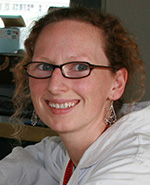
Dr Kaylene Young
Menzies Research Institute Tasmania
University of Tasmania
Dr Young is committed to understanding the plasticity inherent within the adult central nervous system (CNS). During her PhD she received specialist training in neural stem cell biology. As a postdoctoral researcher (UK) she learned transgenic mouse technology in a leading laboratory and generated new transgenic mouse lines that label, trace and ablate neural cell populations in vivo. She subsequently learned to design, carry out and analyse electrophysiological experiments, a vital skill for neuroscience research. Dr Young is passing on these skills, building her research team at UTAS and investigating ways to harness neural stem and progenitor cells for CNS repair.
Throughout her career Dr Young has continually expanded her scientific training, gaining expertise in a variety of neuroscience disciplines, also working with community groups to support dementia care and improve public awareness of neuroscience research. She believes Australian researchers can tackle large research questions, even if those questions require a multidisciplinary approach, are reliant on the cooperation of teams of researchers (national and international) and/or access to shared resources. It is important in science to cooperate, and during her career Dr Young has taken every opportunity to build a network of mentors, respected colleagues and collaborators, and worked hard to provide career support and guidance to her junior colleagues. She looks forward to the opportunity to discuss ways to improve Australian neuroscience research collaborations, access to shared resources (technical, biological and clinical) and the development of resources that will enable neuroscience advancement.
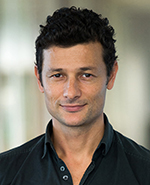
Professor Murat Yücel
School of Psychology and Psychiatry
Monash University
Professor Yücel is a Clinical Neuropsychologist who has been working in the field of substance abuse and mental health for the past 15 years. In this time, he has become an authority in the area of biological psychiatry and neurobiology of drug addiction and psychosis. His research has fundamentally influenced thinking across two themes: the neuropsychopharmacological basis of the ‘compulsive/addictive’ behaviours seen across psychiatric and substance related disorders; and understanding the links between heavy cannabis use, the brain and mental health – especially psychosis. He has an exceptional track record, both in terms of quantity and quality.
Prof Yücel studies self-control and decision-making from several perspectives, including neuroscience, neuropsychology and psychiatry. His group is recognised for its application and integration of advanced neuroimaging techniques (of brain anatomy, function and chemistry) with genetic, psychiatric and neuropsychological assessments to understand the biological and psychological factors that contribute to impaired self-control in addictive and mental health disorders. This approach requires the integration of basic neuroscientists, clinical researchers, and those with computational and physics expertise. He has published nearly 200 articles in his area of expertise, works in a very multidisciplinary manner, and will make a contribution to the relevant debates/discussions of this Think Tank.
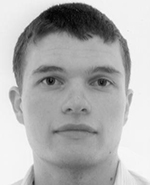
Dr Andrew Zalesky
Melbourne Neuropsychiatry Centre, Department of Psychiatry
The University of Melbourne
Dr Zalesky has an extensive track record in developing biostatistical methods for interrogating neuroimaging data and applying these methods in collaboration with psychiatrists and neuroscientists to elucidate the neurobiological basis of mental disorders. He is interested in taking a computational approach to investigating the way in which the brain functions as a complex, interconnected network and how this network is affected by disease. He is committed to translating advances in disease connectomics to outcomes in mental health. His research can be broadly classified as belonging to bioinformatics/biostatistics, with a particular focus on mapping the human connectome in mental illness.
As an engineer working alongside neuroscientists and psychiatrists, Dr Zalesky can provide unique insight into the computational and methodological bottlenecks facing brain researchers. Advances in high throughput methods (e.g., magnetic resonance imaging, gene sequencing) have provided neuroscientists with terabytes of data, necessitating the use of efficient data processing algorithms. This has resulted in opportunities for collaboration between the traditionally disparate fields of neuroscience and engineering/computer science/mathematics. He can contribute more than five years of personal experience and insight into the challenges and benefits of multidisciplinary collaboration in brain research, particularly related to mental disorders, as well as insight into how brain research can be successfully integrated between disciplines.
Two early to mid-career researchers will be reporting live from the Think Tank
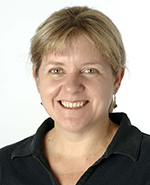

Dr Evans-Galea is a researcher at the Murdoch Childrens Research Institute (MCRI) and the University of Melbourne. She trained in world-leading US laboratories at the University of Utah and St Jude Children’s Research Hospital, and returned to Australia in 2008 to focus on the neurological disorder Friedreich ataxia (FA). In 2009 Dr Evans-Galea received the Australasian Gene Therapy Society's Young Investigator Award and the Friedreich Ataxia Research Alliance USA New Investigator Award, and a MCRI Leadership Award in 2010. Last year, she received a Travel Award from the US National Ataxia Foundation to present her work at the 2012 Ataxia Investigators Meeting, USA. Funded by the National Health and Medical Research Council (NHMRC), Dr Evans-Galea is currently developing novel gene and cell therapies for FA and identifying epigenetic biomarkers for other trinucleotide repeat diseases.
With service on multiple student, institutional and government education and advisory committees, Dr Evans-Galea has also enjoyed lecturing, supervising and training postdoctoral fellows, students and staff, both in Australia and the USA. She is a strong advocate for biomedical research, mentoring, career development and science policy, communicating through a variety of media and events. She interacts regularly with young researchers and was President of the MCRI Early-Mid Career Researcher Association in 2011. Dr Evans-Galea also serves on the NHMRC Postdoctoral Reference Group and is the founding Chair of the Australian Early-Mid Career Researcher Forum. In this role she has contributed to multiple policy submissions; presented at retreats, conferences and symposia; spoken at the Australian Parliament House, and; convened the Forum’s inaugural national meeting. Earlier this year, Dr Evans-Galea was recognised with an ADC Australian Leadership Award for her contributions and her vision for the future of Australian science.
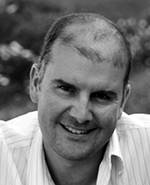
Dr Saundersis a cancer biologistatthe Garvan Institute of Medical Research and also Senior Lecturer in Medicineat the University ofNSW in Sydney. He studies the molecular biology andgenetics of cancer, with the aim of developing new therapies and improvingpatient outcomes. Darren has a PhD from the University of Wollongong (2000) andundertookpost-doctoral training at the Garvan Institute in Sydney.
He recentlyreturned to Australia to establish his own research group followinga three-year position at the University of British Columbia in Vancouver, Canada.Dr Saunders was awarded the NSW Life Scientist Research Award in 2010. His group investigates fundamental mechanisms ofcancerdevelopment and progression, with the aim of developing novel therapeuticstrategies.Specifically, his research is focused on the ubiquitin-proteasome system andserine protease inhibitors (serpins). He is particularlyinterested in integratinggenomics, proteomics, biochemical and animal models for functional validationand translation of the avalanche of novelmutations flowing from tumour genomesequencing efforts. He is also Deputy Chair of the Australian Early-Mid Career Researcher Forum.
© 2024 Australian Academy of Science